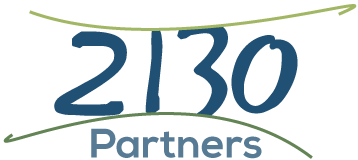 Many of the statements and conversations that pass for normal today are filled with words and phrases that have no power and fill the conversational space with the false implication of action. This type of communication seems to keep the speaker from being present to his or her own experience and commitment, (or, more likely, lack thereof).
Let’s start with the word "like." Admittedly this overused word is mostly in the younger set. It seems to be a substitute for being articulate enough to share one’s own experience accurately and authentically. As an example, the phrase “it’s like I’m cold,” - does that mean you are? You aren't? Why not just state “I am cold?” Including "like" seems to allow a lot of talk without much real connection to personal experience. The words speak to an experience that is similar or "like," rather than a statement that owns one's physical state in that moment.
Many of the statements and conversations that pass for normal today are filled with words and phrases that have no power and fill the conversational space with the false implication of action. This type of communication seems to keep the speaker from being present to his or her own experience and commitment, (or, more likely, lack thereof).
Let’s start with the word "like." Admittedly this overused word is mostly in the younger set. It seems to be a substitute for being articulate enough to share one’s own experience accurately and authentically. As an example, the phrase “it’s like I’m cold,” - does that mean you are? You aren't? Why not just state “I am cold?” Including "like" seems to allow a lot of talk without much real connection to personal experience. The words speak to an experience that is similar or "like," rather than a statement that owns one's physical state in that moment.
Another set of words and phrases we hear quite regularly are: “try,” “need to,’” “want to,” “should,” “ought to,” and “would be nice if…” Our view is that these, and many more phrases like them, occur constantly in every day management conversations and are worse than meaningless. In fact, it could be said that in these types of conversations both the speaker and the listener are "deluded." They are deluded because there is an implication of action where there will most certainly be none. We call these words and phrases the “said” portion of a statement. Underneath the "said" is that which is “unsaid.” We find the "unsaid" is usually some version of, "but I can’t." For example, the "said might be" - “we should put a budget together on that." The "unsaid" might be, "but we don’t have time.” Another example of the "said" might be - “I’d love to go with you guys." The "unsaid" might be, "but my wife would never stand for it."
The third, even subtler phrasing we hear is some version of “my opinion would be…” or “my idea would be…” Said in this way, the speaker never seems to be questioned and yet, what does he or she mean? “”My idea would be…" but, it turns out what they're saying isn't really their idea? Or is it? Another example is “my opinion would be…" So does that mean it's that person's opinion unless it meets with criticism in which case they’ll change it? As listeners we really don’t know where the speaker stands. It's easy to wonder if the speaker knows their own point-of-view or whether they are just testing the waters to see what is acceptable, popular, or meets with approval from the top of the hierarchy in the conversation.
It seems the culture of many organizations today encourages this type of "soft pedal" speak. It leaves people latitude to shift to what is acceptable and to recover more easily if they "step in it." The issue is that people aren't encouraged to have a real point-of-view, nor are they encouraged to articulate it if they genuinely have one. From a leadership standpoint, we don't believe this builds leadership skills, confidence or a healthy cultural paradigm in which team members can bring all that they are and have to the table.
The antidote to all of this unreal or deluded conversation is taking the risk to say directly and succinctly what you are really experiencing/feeling, what your truth is, what you are committed to, what you promise, and what you can be counted on to do. If you are a leader and you begin to communicate in this way, those around you will recognize the authenticity of it. You will likely build more trust within your team. Particularly if you encourage them to also take on this style of communication. An important key is that it will only succeed if people see that they will not be punished, criticized, embarrassed or shamed for doing it. A strong leader builds a safe container for those around them to bring their best thinking knowing they can articulate it and it will be received with respect even when others disagree.
 If you take this on and find yourself uncomfortable, make note of what your mind is saying is going to happen to you or how your internal dialogue is criticizing you. Use your self-awareness skills and you will likely find what's stopping you is a limiting belief. Once identified, you can go to work on letting go of it. Check out Kimberley Heart or Morty and Shelly Lefkoe if you need help working through your limiting beliefs.
If you take this on and find yourself uncomfortable, make note of what your mind is saying is going to happen to you or how your internal dialogue is criticizing you. Use your self-awareness skills and you will likely find what's stopping you is a limiting belief. Once identified, you can go to work on letting go of it. Check out Kimberley Heart or Morty and Shelly Lefkoe if you need help working through your limiting beliefs.
To become a clear, powerful, and intentional leader, listen to your statements over the next few days and make a record of all the times you say things from one or more of the above groupings. You probably have your own favorite versions of each! If you are having trouble self-observing, keep going for it and also start recording what you hear others saying. What is the "unsaid" in each conversation? Are you willing to restate your comments with real self-awareness, authenticity, and commitment?
This is an opportunity to multiply your and your team’s productivity and effectiveness!
 For the last 4 years or so we have developed a set of ideas we call Lean Conversations. The fundamental notion is that academicians, consultants, leaders, and managers in our culture have focused on and accomplished tremendous gains in productivity through process improvement, supply chain management, IT, and a host of manufacturing concepts including Lean Manufacturing. The area that has been largely overlooked as an opportunity for improvement in productivity is the friction and waste that occurs in the conversations people have with each other as they go about their daily work together. By friction and waste we mean the upsets, resistance, broken promises, undelivered communications, failed intentions, etc., etc. (You get the picture.)
We have long believed the single biggest key to productivity gains in our economy today is to identify and clear upsets, first in ourselves, and then in others. Over many years with our clients we have conducted a sort of “informal qualitative survey,” by asking them, “ if people in your organization just came to work, did their jobs, and went home without having upsets, issues with each other, their work, etcetera, what time could you go home?” Consistently we would hear they could go home between 10:30 and 11:00 a.m. This answer used to surprise us until we heard it over and over
For the last 4 years or so we have developed a set of ideas we call Lean Conversations. The fundamental notion is that academicians, consultants, leaders, and managers in our culture have focused on and accomplished tremendous gains in productivity through process improvement, supply chain management, IT, and a host of manufacturing concepts including Lean Manufacturing. The area that has been largely overlooked as an opportunity for improvement in productivity is the friction and waste that occurs in the conversations people have with each other as they go about their daily work together. By friction and waste we mean the upsets, resistance, broken promises, undelivered communications, failed intentions, etc., etc. (You get the picture.)
We have long believed the single biggest key to productivity gains in our economy today is to identify and clear upsets, first in ourselves, and then in others. Over many years with our clients we have conducted a sort of “informal qualitative survey,” by asking them, “ if people in your organization just came to work, did their jobs, and went home without having upsets, issues with each other, their work, etcetera, what time could you go home?” Consistently we would hear they could go home between 10:30 and 11:00 a.m. This answer used to surprise us until we heard it over and over  again. Let’s allow for gross overstatement and cut that savings in half. Even with this modification it appears there is at least two to four hours of time savings available for the leaders, (and presumably everyone else in the organization), if there were less upsets, less confusion and fewer issues in people’s interactions with each other. Bottom line, this means ther are potentially enormous opportunities for gains in productivity right in front of us, largely unnoticed, (or framed in that way), and largely unleveraged.
again. Let’s allow for gross overstatement and cut that savings in half. Even with this modification it appears there is at least two to four hours of time savings available for the leaders, (and presumably everyone else in the organization), if there were less upsets, less confusion and fewer issues in people’s interactions with each other. Bottom line, this means ther are potentially enormous opportunities for gains in productivity right in front of us, largely unnoticed, (or framed in that way), and largely unleveraged.
 Let's talk about a set of ideas we have been evolving for several years that we call Lean Conversations. The fundamental notion is that academicians, consultants, leaders, and managers in our culture have focused on and accomplished tremendous gains in productivity through process improvement, supply chain management, IT, and a host of manufacturing concepts including Lean Manufacturing. The area that has been largely overlooked as an opportunity for improvement in productivity is the friction and waste that occurs in the conversations people have with each other as they go about their daily work together. By friction and waste we mean the upsets, resistance, broken promises, undelivered communications, failed intentions, etc., etc. (You get the picture.)
We have long believed
Let's talk about a set of ideas we have been evolving for several years that we call Lean Conversations. The fundamental notion is that academicians, consultants, leaders, and managers in our culture have focused on and accomplished tremendous gains in productivity through process improvement, supply chain management, IT, and a host of manufacturing concepts including Lean Manufacturing. The area that has been largely overlooked as an opportunity for improvement in productivity is the friction and waste that occurs in the conversations people have with each other as they go about their daily work together. By friction and waste we mean the upsets, resistance, broken promises, undelivered communications, failed intentions, etc., etc. (You get the picture.)
We have long believed  In May I was forwarded an email written by Shama Kabani (@Shama). [She runs an
In May I was forwarded an email written by Shama Kabani (@Shama). [She runs an  coming from McKinsey and recapped by Shama in her email. I found them compelling because in addition to my role as Principal and Co-founder of 2130 Partners I am also a Best Practice Chair at
coming from McKinsey and recapped by Shama in her email. I found them compelling because in addition to my role as Principal and Co-founder of 2130 Partners I am also a Best Practice Chair at  Many of the statements and conversations that pass for normal today are filled with words and phrases that have no power and fill the conversational space with the false implication of action. This type of communication seems to keep the speaker from being present to his or her own experience and commitment, (or, more likely, lack thereof).
Let’s start with the word "like." Admittedly this overused word is mostly in the younger set. It seems to be a substitute for being articulate enough to share one’s own experience accurately and authentically. As an example, the phrase “it’s like I’m cold,” - does that mean you are? You aren't? Why not just state “I am cold?” Including "like" seems to allow a lot of talk without much real connection to personal experience. The words speak to an experience that is similar or "like," rather than a statement that owns one's physical state in that moment.
Many of the statements and conversations that pass for normal today are filled with words and phrases that have no power and fill the conversational space with the false implication of action. This type of communication seems to keep the speaker from being present to his or her own experience and commitment, (or, more likely, lack thereof).
Let’s start with the word "like." Admittedly this overused word is mostly in the younger set. It seems to be a substitute for being articulate enough to share one’s own experience accurately and authentically. As an example, the phrase “it’s like I’m cold,” - does that mean you are? You aren't? Why not just state “I am cold?” Including "like" seems to allow a lot of talk without much real connection to personal experience. The words speak to an experience that is similar or "like," rather than a statement that owns one's physical state in that moment. If you take this on and find yourself uncomfortable, make note of what your mind is saying is going to happen to you or how your internal dialogue is criticizing you. Use your self-awareness skills and you will likely find what's stopping you is a limiting belief. Once identified, you can go to work on letting go of it. Check out
If you take this on and find yourself uncomfortable, make note of what your mind is saying is going to happen to you or how your internal dialogue is criticizing you. Use your self-awareness skills and you will likely find what's stopping you is a limiting belief. Once identified, you can go to work on letting go of it. Check out